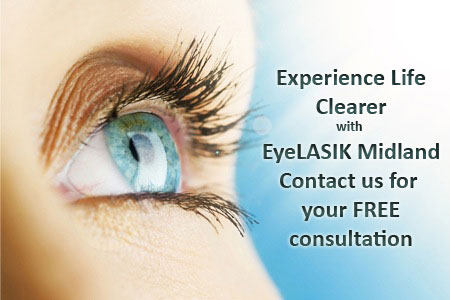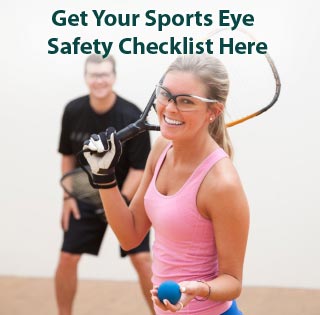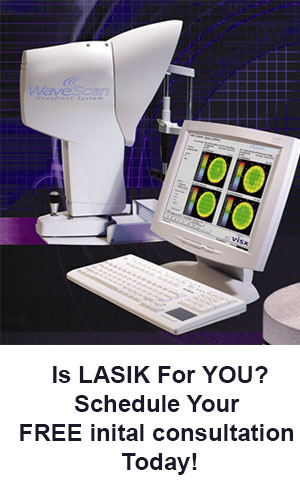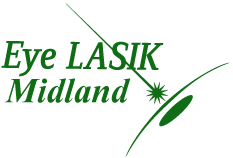by EyeLASIK | Jul 9, 2014 | better vision, Eye LASIK, laser vision correction surgery
The freedom from glasses and contacts that Lasik eye surgery offers is completely life-changing. Add in the fact that Lasik eye surgery is now one of the safest procedures you can have to correct your vision, and it no wonder millions of people have chosen to have Lasik eye surgery.
Although Lasik surgery is a simple procedure, there is still a recovery period. However, Lasik recovery is usually quick and free from pain, although you may have discomfort for a day or two after the procedure. However, there are things you can do to ensure that your Lasik recovery is successful.
Get Plenty of Rest During Recovery
After your procedure, go home and take a nap. Let your eyes rest. Although, Lasik is a safe and simple procedure, your eyes still need time to recover. The best way to give them a head start is to keep them closed. Most patients do feel some irritation once the topical anesthetic wears off, and keeping your eyes closed is a great way to minimize this irritation.
Use Your Prescription Drops as Directed During Recovery
It’s important to use the drops prescribed by your ophthalmologist as directed during your Lasik recovery. These drops should include an antibiotic, along with a steroid and possibly an anti-inflammatory medication. These will help prevent infection and swelling, while alleviating some of the irritation you may feel shortly after the procedure. If you have any questions on how to use your drops, ask your physician before you leave the surgery center.
Don’t Rub Your Eyes During Recovery
Rubbing your eyes during your Lasik recovery period can cause complications with the flap created during the procedure, which can lead to blurry vision and possibly the need for more surgery. This is another great reason to take a nap after your procedure since you won’t feel the need to rub your eyes while you’re asleep.
Where Protective Eyewear During Recovery
You’ll be given safety glasses or goggles to wear after your procedure. For the first 24 to 48 hours during your Lasik recovery, you should wear these anytime you are outside to prevent any dirt or debris from getting into your eyes. You will also need to wear these glasses or goggles anytime you sleep for the first week after the procedure. This will help prevent you from accidentally hitting or rubbing your eyes in your sleep.
Use Artificial Tears During Recovery
In the kit you are given for your Lasik recovery, you will have drops that can be used to moisturize your eyes. Use them. These artificial tears will help alleviate discomfort during your Lasik recovery, as well as keep your corneas hydrated, which will allow them to heal quickly and properly. These drops can be used as often as needed. If you will be using them at the same time as your prescription drops, use the tears first and then wait five minutes before instilling the prescribed drops.
These five tips will help to ensure your Lasik recovery goes smoothly and help alleviate any discomfort. However, be sure to check with your surgeon to see if he or she has any other recommendations for your Lasik recovery.
Ready to see if Eye LASIK surgery is for you? Schedule your FREE evaluation with Eye LASIK Midland. Click HERE or on the image below.


by EyeLASIK | Jul 2, 2014 | better vision, Eye LASIK
If you play sports, or even watch them on television, you know how common injuries can be. What you may not know is how commonly the eye is subject to one of these injuries. If you’ve been watching the Little League All Stars or the College World Series recently, you probably noticed the players wearing safety glasses.
Professional athletes know their eyes are precious, and they take protective eyewear seriously. Professional volleyball, basketball, and baseball players are among the many athletes who wear eye protection on the field. Even water sports athletes including swimmers know the importance of wearing proper eye protection.
Sports-related eye injuries are very common. In fact, thousands of adults and children suffer these types of injury every year. The most common of these injuries is the corneal abrasion or scratch and laceration (a cut).
While a scratch to the cornea is a minor injury that can be treated fairly easily, it can also lead to vision loss if not treated at all. Other more serious sports injuries can include a traumatic cataract, a fractured eye socket, bleeding in the eye, a penetrating injury that punctures or ruptures the eyeball or even a retinal detachment, all of which can lead to blindness.
Children are particularly prone to eye injuries due to their underdeveloped depth perception. There are a number of ways a child’s eye can be injured while playing sports. Direct impact from a baseball, an elbow or finger to the eye, sand in the eye and even glare from the sun can cause an eye injury.
Protect Your Eyes
It’s important to protect your eyes with proper eyewear anytime you engage in athletics to prevent injury. But it’s also important to wear the right type of eyewear to protect your eyes.
Most athletes wear protective eyewear made with polycarbonate lenses. Polycarbonate is a type of high-grade plastic that is impact resistant and about 20 times stronger than regular eyeglass lenses. It is also pliable, which means it can be used to make a variety of eyewear to protect your eyes including safety glasses, face shields and sunglasses.
When choosing eyewear to protect your eyes, it is also important to make sure the materials used meet the American Society of Testing and Materials, or ASTM, standards for your particular sport. Our eye care professionals can help you decide which eyewear is best to protect your eyes.
Wondering what is recommended by professionals in sports protective eyewear? Get our checklist and know you’ll be protected. CLICK HERE or on the image below.


by EyeLASIK | Jun 25, 2014 | better vision, Eye LASIK, laser vision correction surgery
What is the IntraLase Method?
The IntraLase Method is a 100% blade-free approach to creating your corneal flap— the thin flap of tissue that the doctor folds back in order to perform your LASIK procedure.
How does it differ from other methods of creating a corneal flap?
The only other way to create a corneal flap is by using an instrument called a microkeratome. A microkeratome is a hand-held steel blade that makes a cut as it travels across the cornea. With the IntraLase Method, a blade never touches your eye.
How does the IntraLase Method work?
Tiny pulses of laser light pass harmlessly through the outer portion of your cornea and form a uniform layer of microscopic bubbles just beneath the surface of your eye. Just prior to LASIK surgery, the doctor can lift the corneal flap by gently and easily separating the tissue where these bubbles have formed.
Besides being blade free, what other benefits are there to the IntraLase Method?
IntraLase Method virtually eliminates the most severe sight-threatening complications. While LASIK complications are rare, when they do occur they are primarily related to the use of the microkeratome. The Method is 100% blade-free, exceptionally advanced, and has been shown to improve outcomes for more patients.1 And patients report better quality of vision overall, particularly in terms of their ability to see well in low light
Is the IntraLase Method proven?
To date, the IntraLase Method has been used in hundreds of thousands of LASIK procedures around the world.
How long does it take to create a flap using the IntraLase Method?
The creation of the flap itself takes only about 15-20 seconds per eye. Including preparation time, the LASIK procedure takes about 10 minutes total.
Is it painful?
No—the doctor applies drops to numb the eye.
What’s the reaction of patients who have experienced the IntraLase Method?
In a clinical survey, the vision in the IntraLase treated eye was preferred by LASIK patients 3-to-1 over the vision in the microkeratome-treated eye.
Ready to decide if laser vision correction surgery is for you? Contact Eye LASIK Midland for a free evaluation. Click HERE or on the image below to schedule your free consultation.

by EyeLASIK | Jun 18, 2014 | Children's Eye Health, Eye LASIK
Summer vacation for school-age children means outdoor play and long hours at the pool or beach. The increased sports activity and exposure to ultraviolet rays also means an increased risk to children’s eyes.
New research shows that children’s eyes can be damaged from sun exposure, just like their skin. This damage may put them at increased risk of developing debilitating diseases such as cataracts or macular degeneration as adults. Most parents are aware of the critical need to protect their children’s skin from UV exposure, yet few insist their children wear sunglasses.
Wearing protective goggles during sports activity is also highly recommended. The National Eye Institute reports there are more than 100,000 sports-related eye injuries every year with 42,000 requiring emergency care.
Below are 5 steps recommended to protect children’s eyes
1. Make sure your kids wear sunglasses-especially younger children.
Half the entire time we spend outdoors in our lives occurs before 12-years of age. Sunglasses for children may be purchased inexpensively at many retail and online outlets but make sure the sunglasses you purchase are rated to block both UVA and UVB radiation. All sunglasses block UVB, but some do not block UVA rays, which are damaging to the retina. Look for glasses with a polycarbonate lens and know that children under six may need a pair with Velcro straps to keep them in place.
2. Wear protective eye gear for ball sports.
Every year, some 18,000 sports-related eye injuries are seen in US hospital emergency rooms in this country. While helmets are required for many organized sports like baseball, goggles or face guards usually are not. The American Academy of Ophthalmology recommends that children wear polycarbonate goggles for baseball, basketball and racket sports, including tennis. Regular glasses are not recommended, since they usually are not secured to the head, nor made from polycarbonate.
3. If sand gets in your child’s eyes, don’t let him rub it.
If a child gets sand blown or thrown into his eyes, an adult should immediately take the child to a sink with running water. Do not allow him to rub his eyes as this can cause damage to the cornea (outer layer of the eye). Use a clean cup to pour water over the eyes to remove sand particles. Encourage blinking and do not discourage crying, since tears remove eye irritants. If flushing and blinking does not remove the sand particles, seek medical attention.
4. Find and use a non-irritating sunscreen.
Generally, adult sunscreens are fine for children. If your child gets a rash from his sunscreen, review the ingredient’s list and choose a different one. Look for one that is PABA free, since that chemical can cause irritation in some individuals. You might also look for one that gets its UVA protection from titanium dioxide or zinc oxide, both inert sun blocking pigments, which tend to be thicker, more stable and less irritating than avobenzone, another common ingredient. Sunscreen is important; your child should not be discouraged from using it because of a fear of irritation.
5. Check the chlorine level in your pool.
If a swimming pool has too little chlorine, it can allow algae and other bacteria to grow, which can lead to eye infections. Also, be sure to check the levels of chloramines and the pH of the pool to avoid stinging and redness. One easy solution is to have children wear a pair of goggles that will keep pool water from entering the eye. After swimming in a pool, have your child shower. If redness and irritation persist after swimming, it could be a sign of a more serious infection and should be seen by a physician.
by EyeLASIK | Jun 11, 2014 | Uncategorized
If you’re considering laser eye surgery, it’s imperative that you know the facts. There are a number of myths surrounding the procedure, despite the number of successful procedures performed yearly. Here we debunk five common myths laser vision correction surgery.
Myth #1: It’s Painful
It’s a very common misconception that laser eye surgery is painful in some way. This may be because it is a common fear for most people, but it is simply not the case.
During the procedure, your doctor will administer several drops of a topical anesthetic to numb your eyes. This will prevent any sensation of pain. In fact, the most uncomfortable part of laser eye surgery is the speculum used to hold your eye open during the procedure.
Myth #2: Surgery Results Aren’t Permanent
Laser eye surgery is a permanent treatment. The laser used to correct your vision removes a predetermined amount of tissue from your eye, which cannot grow back. If you notice that your vision is gradually starting to change, chances are it’s because you’re aging.
As you get older, your eyes age with you, which means at some point your vision will change and you will most likely need reading glasses. But this does not mean that your laser eye surgery wasn’t permanent, it simply means your eyes are getting older.
Myth #3: Results Take Time
With older procedures such as Radial Keratotomy, results were typically seen several days to weeks after the procedure. However, with laser eye surgery such as LASIK, results are typically seen immediately after the patient sits up from the procedure table.
However, in some cases, vision may be hazy or blurry for the first day or two. Because the cornea heals very quickly, most patients notice dramatic improvement in their vision within about 24 to 48 hours.
Myth #4: You’re Guaranteed 20/20 Vision
As with any surgery, there are no guarantees. However, with the advent of wavefront LASIK, the odds are much improved. For most patients, their final visual outcome depends on both the type of procedure and amount of correction needed. Because of this, it’s important to talk to your surgeon about your expectations before your procedure.
Myth #5: Laser Eye Surgery Is Risky
As with any procedure, there are risks with laser eye surgery. Halos, glare, or overcorrection are just some of the possible risks. Talk with your doctor about your specific concerns to put the risks in perspective.





